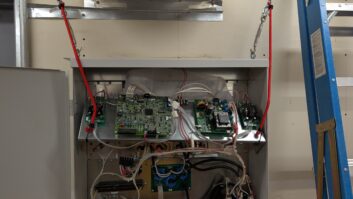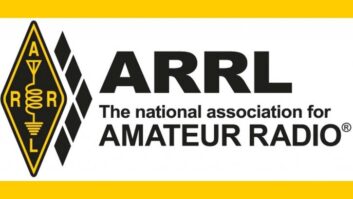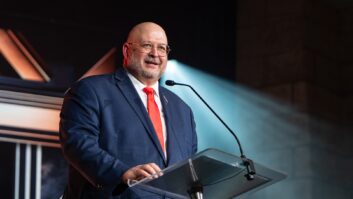As Radio World has reported, the FCC recently made it easier for AM stations to use modulation-dependent carrier level systems to save money on their transmitter power bills. Our website recently featured some engineering back-and-forth on MDCL, specifically the Amplitude Modulation Compandingalgorithm, or AMC, although the debate has broader implications. I share the conversation here.
J. Fred Riley was a chief engineer for radio and TV stations, and worked for Continental Electronics for 26 years, primarily in the area of high-power broadcast (100 kW–1 MW).He’s now retired and living in Dallas. He wrote:
I can’t hold it in any longer. This move to AMC is stunningly wrong.
A careful analysis of the algorithm and results of AMC show that if 3 dB of AMC works for a broadcaster, they’re simply licensed for 3 dB too much power. AMC does not preserve the full PEP capability of the transmitter or the listener’s signal-to-noise ratio.
MDCL is also called Variable Carrier Power by the International Broadcasting Bureau. AMC is a BBC algorithm to save money at the expense of signal-to-noise ratio. On the other hand, keeping the full PEP of the transmitter can be achieved by a number of variants. And of those, Continental Electronic Corp.’s CCM (Controlled Carrier-Level Modulation) system is the most sophisticated.
Sophisticated means, in this case, power savings without audible artifacts. CCM looks only to keep the carrier high enough to support the negative peak modulation level; positive peaks are allowed to go to full PEP. And the inter-syllabic time delay between carrier level shifts of the CCM system results in a near-perfect power-consumption-reduction system that results in both power savings and preservation of the listener’s signal-to-noise ratio.
AMC lowers power consumption the most, no question. But it does so at a great cost to coverage. CCM, on the other hand, may actually increase coverage while saving 22 percent in a talk format or 16 percent in a hard rock format.
And, for those who think this is something new and miraculous, I refer them to January 1935 issue of QST, the ARRL Magazine. This is an amateur-radio version of a technique used by WGY in 1931! It is fair to say, however, that this technique did not become quite so easy to implement until the advent of transmitters coupled to DC. Once that hurdle was met, implementation became simple and elegant.
I delivered a paper to the IEEE Broadcast Technology Symposium some years ago wherein I compared the various power-savings technologies using variable carrier power (see www.radioworld.com/attachments/CCM_020312.pdf).
The conclusion was clear. If AMC works for you, you’re running too much power in the first place. But if you need to maintain coverage, you use a technique that maintains the full PEP capability of your transmitter.
Further, because CCM only provides the carrier necessary to support negative peak modulation, if any asymmetry survives the processor, that is allowed to raise the PEP even more. And CCM prevents the receiver’s AGC from acting as an unwanted compressor by the inter-syllabic delay mentioned before.
I am happy to see my recommendation for the use of variable carrier power be put to use in the United States; it has been and is used on almost all HF broadcast stations. What appalls me is the move to use the worst of all possible variable carrier power systems.
It would be wrong not to point out two additional points:
A. The carrier does nothing except demodulate the sidebands. When PLLs and synchronous detection was difficult and costly to implement, there was no alternative. But synchronous detection is widely available, solves a host of problems and allows the (truly) useless carrier to be reduced by 20–26 dB while recovering a full-bandwidth AM signal.
B. The average RMS modulation level, despite all the advances in processor technology, has advanced from 30 percent in the 1960s to only 40 percent in 2012. If true power savings is really a major criterion, think how much power could be saved by using synchronous detection. The calculation of power savings is left for the reader.
Geoff Mendenhall of Harris Corp. expanded on Riley’s comments about MDCL deployment.He’s vice president of transmission research and technology for Harris Broadcast Communications in Mason, Ohio. Harris offers two kinds of MDCL algorithms for its AM transmitters, one of which is based on AMC:
Fred’s point about the “top down,” AMC algorithm reducing the total peak envelope power (PEP) is correct. The carrier is reduced by 3 dB during modulation peaks which does reduce the total PEP of the transmitter, but the full carrier power is restored during lapses in audio, thereby masking the impact on fringe area S/N.
This perceptual masking effect on the audio S/N would not be the same if the transmitter power output was simply reduced by 3 dB with conventional AM modulation. Fringe area listening tests documented by several different broadcasters confirm that there is a negligible impact on received audio S/N or coverage when using the AMC –3 dB algorithm.
AMC seems to have the least impact on simultaneous IBOC, HD Radio operation, possibly because the AMC algorithm causes less variation in the total integrated power output of the transmitter than the “bottom up” algorithms like ACC or DCC. Less variation in total received power will have less impact on the receiver’s AGC/AVC circuit trying to follow the variations in transmitted carrier level. More tests with different receivers are needed to confirm this.
The December 1988 BBC Engineering Report “Implementation of Amplitude Modulation Companding in the BBC MF National Networks” (BBD RD 1988/15) provides a very complete analysis of AMC vs. a fixed reduction of carrier power and the relative impact on coverage.
Fred is also correct in pointing out that AMC gives the greatest power consumption reduction with heavily processed audio that maintains high average AM modulation levels. I have seen up to 37 percent power savings with AMC vs. up to 21 percent with ACC using the same transmitter, audio processing and audio content. If a broadcaster is not operating with HD Radio and wants to maintain the full PEP of the transmitter, the option to use ACC or DCC is available from practically all of the transmitter manufacturers.
Use of any of the MDCL algorithms gives the broadcaster the opportunity to significantly reduce the AM transmitter power consumption without having to accept any significant impact on coverage or audio quality.
The bottom line is that the broadcaster will need to experiment with several different algorithms to determine which one gives the best tradeoff in audio quality and coverage for that particular station’s operating mode and audio program content.
Cris Alexander, director of engineering for Crawford Broadcasting and a contributor to Radio World, then commented. Cris is an advocate for the MDCL approach, and has experience with it particularly with Nautel transmitters.
Geoff’s comments are well stated and spot-on, with the bottom line being the real “bottom line” — one MDCL algorithm does not necessarily fit all and it would be wise for stations to experiment to find the best fit for their individual situations.
I also agree that while the total PEP is reduced with AMC, the power in the sidebands, which carries all the information, remains the same as if there were no companding, and that would not be the case if, as Fred Riley suggests, the power of the station were simply reduced.
The key is indeed the perceptual S/N in the fringe area, which is masked very nicely in the AMC system. In my opinion, this is key in talk formats, which dominate the AM band.
And J. Fred Riley then replied:
You can’t beat the mathematics of AMC vs. CCM; running half-power cuts the signal-to-noise ratio 3 dB. It’s as simple as that.
And given that simple fact, a broadcaster might as well file for half power and run that permanently if HD is all you’re interested in along with power savings. It is still amazing to me that a defect in the HD system is driving broadcasters to consider a power savings technique that cuts their signal-to-noise ratio. Is that what’s going to drive this, a defective piece of software?
Another simple fact is that HF (shortwave) broadcasters have been using MDCL with a CCM-like algorithm for over 25 years. The AMC system is peculiarly British, developed by Marconi. That Marconi is no longer in the HF and MW business should be proof enough of the failure of that concept.
Even the premier MDCL monitoring instrument used around the world, the Belar AMMA-2, supports CCM, not AMC. (Not that it couldn’t with new software; there’s just no demand for a monitor for such a self-defeating system.)
Share your thoughts and experiences regarding MDCL. Write to me at [email protected].
Radio World will have more about station experiences with MDCL, effects of the algorithms on AM IBOC and discussion by a subcommittee of the National Radio Standards Systems Committee of developing an MDCL “best practices” guide. Also, the upcoming NAB Show will include a session on MDCL with speakers from Nautel, Harris and the International Broadcasting Bureau.







